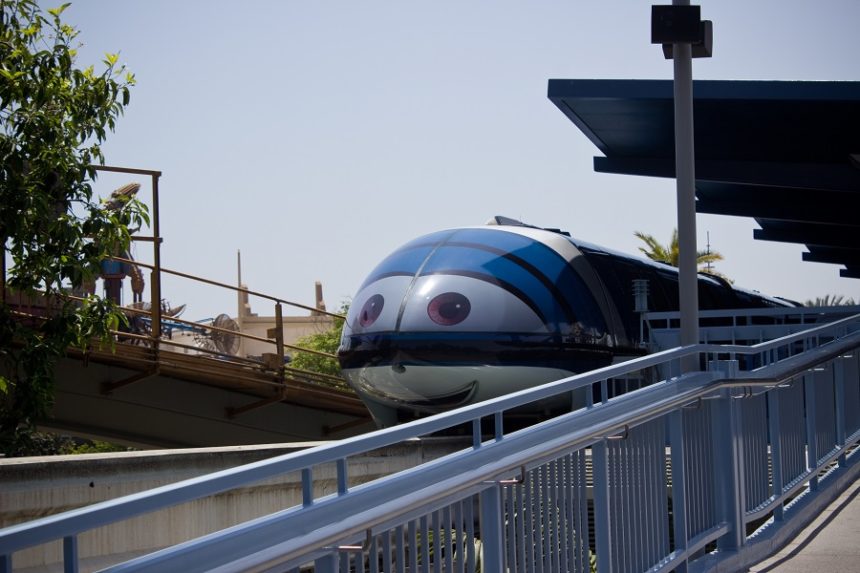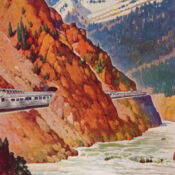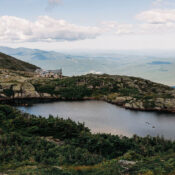When you picture the Disney parks in America, a few iconic landmarks spring to mind. There’s Sleeping Beauty Castle in California and Cinderella Castle in Florida. There’s Spaceship Earth in Epcot and the Tree of Life in Animal Kingdom. You’ve got Space Mountain, the Matterhorn, Everest, Splash Mountain, and Big Thunder Mountain, along with Mount Gushmore and Mount Mayday in the water parks. But one of the most recognizable institutions of the parks is not only a symbol of Disney, but the first of its kind in the Western Hemisphere. That would be the monorail, and it made its debut 60 years ago.
The monorail was created for Disney in part by Alweg, the German company that would also build the Seattle Center Monorail in 1962; though defunct since 1964, Alweg had already licensed their technology to Hitachi Monorail in 1960, and that company still builds systems in various countries. The building and assembly of the Disneyland monorail cars and systems took place in Burbank under the direction of Disney designer Bob Gurr, who had famously designed most of the park’s attractions, like the Haunted Mansion and the Matterhorn Bobsleds.
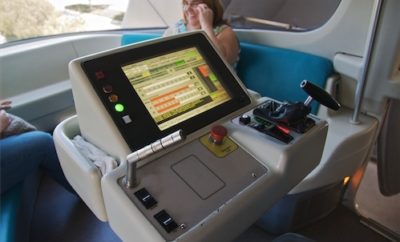
Monorails differ from other train systems due to the use of the single beam or rail (hence “mono,” meaning “one”). Though there were test versions built in the 1800s, and Epsom Salts started operating a monorail for their Mojave Desert operations in the 1920s, no daily operating version existed until Disney’s. When the Disneyland monorail went in, companies that supported those systems began promoting monorails as a kind of transportation of the future. The fact that Disneyland opened the original section of monorail in their Tomorrowland park only bolstered this idea in the minds of the public.
Eventually, Disney added more trains to the system and 2.5 additional miles of track in 1961. That track connected to the Disneyland Hotel, changing the monorail from a simple ride to an active transportation system for guests. Presently, Downtown Disney is where the Hotel stood, and the train also passes through Disney’s California Adventure.
When Walt Disney World opened in Florida in 1971, it featured the monorail as well, with the WDW system operating routes for the Magic Kingdom and “Resort and Express.” In 1982, they added an additional line for Epcot, taking the system to almost 15 miles. Today, the WDW system is one of the most heavily traveled monorail systems on the planet, with 150,000 riders per day. That’s surpassed only by Japan’s Tokyo Monorail (300,000) and China’s Chongqing Rail Transit (carrying a mind-boggling 900,000 daily riders). The WDW lines now frequently eschew their traditional white-with-colored-stripe scheme for decorative “wraps” that promote particular Disney films; these have included Tron: Legacy, Avengers, Zootopia, and, as of June 12, Toy Story 4.
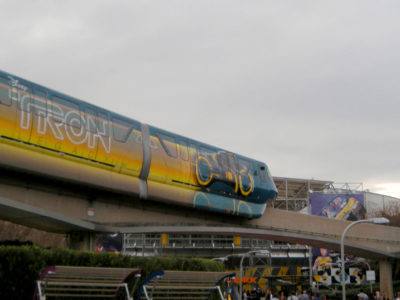
The notion of the monorail as the “transportation of the future” might still hold up. Nearly 75 monorail systems operate around the world on every continent but Antarctica. Eleven systems are under construction in Brazil, Nigeria, Italy, and four Asian countries, with dozens more proposed across the planet (17 additional lines are proposed for India alone).
However, there are practical concerns that have made it difficult for other cities to implement monorail lines. Chief among them is cost; monorails can be expensive, particularly as they require an entire new track structure and generally need to be elevated. In cities that have trains, subways, trolleys, and so forth, those conveyances generally use the same types of tracks and even share those tracks in cities like San Diego. Monorails, at this point, are also harder to maintain, as some parts aren’t as generally available and the frequently elevated nature makes simple maintenance more difficult. It’s also harder to switch trains on monorail tracks than on conventional tracks due to their wrap-around design. Any full-service line in a city would need to employ track-switching at some point, so that’s another contention. The cities around the world that have decided to invest in monorail have gone all in, but it’s also easy to see why other cities have stuck with more familiar options.
Regardless of their assorted cons, monorails continue to offer the advantage of requiring less space than other forms of mass transit, because their frequently elevated posturecreates a reduced footprint offered by the separated nature of the support beams; this also makes them more quiet. Their safety record as a form is quite good, as the wrap-around nature of the cars on the beam makes it significantly harder for a monorail to derail than a conventional train. So while it may have taken longer for the monorail to catch on, it’s still possible that the form will continue to get bigger, appropriately enough, in the future.
Featured image: HarshLight via Wikimedia Commons, licensed under the Creative Commons Attribution 2.0 Generic license)
Become a Saturday Evening Post member and enjoy unlimited access. Subscribe now
